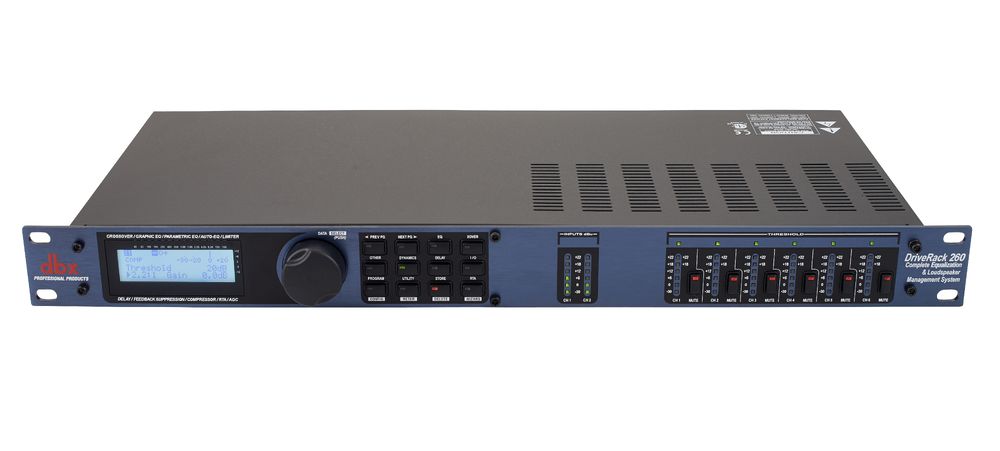8. Delay Lines
A practical application for multi-effects can be delay lines. They are necessary in sound reinforcement when using delay stacks. These are speakers arranged at staggered intervals, playing back the same audio signal with a time delay. Multiple stacks of these form a delay line. This setup is used, for example, when the area to be covered is so long that the sound from the front speakers takes significantly more time to reach points farther away than points closer to the stage or performer. Delay lines compensate for this delay by providing direct sound to those more distant points. That's why delays in multi-effects can also be interesting for organizers of small open-air events and street festivals. They're also useful in venues that, while not very long, have reflective walls, ceilings, and floors to varying degrees.

The dbx Driverack 260 is a digital delay line controller in 19-inch format.
For this to work, the multi-effects unit needs to have multiple outputs that can be delayed. It becomes especially convenient when the sound engineer can rely on a dedicated delay line controller. Here, the adjustment of delay times isn't done by choosing a value in milliseconds but rather by entering a value in meters, from which the device automatically calculates the appropriate delay time. A noise gate for cleaning up the sound and balanced XLR connectors for a clean signal transmission are also indispensable in this scenario.


